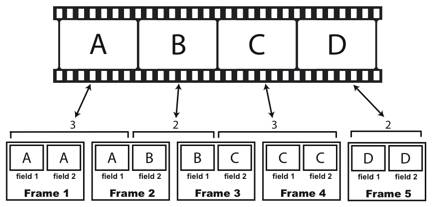 |
T436 Fall 2012 - Week 7 Readings: Blain Brown, chapter 16 technical issues & 17 film formats Video & color sampling Agenda:
Notes:
Tech Issues --------------------------------- Shooting outdoors A large percentage of fiction and non-fiction is shot live on an outside set. The logistics of shooting these can pose challenges. Shoots must be scheduled weeks or months ahead of time, but one never knows the weather until the day or two before at best- and even then it can surprise us. You normally have to schedule a series of shoot dates and rain dates following shortly thereafter. Lighting can be a critical component. Whether you need a “sunset on the beach” scene or long shadows, you need to be able to determine the height of the sun (elevation/altitude), its direction in relation to your position (azimuth) and when it will set. For simple length of the day (sunrise/sunset), you can refer to an astronomic almanac. There are also a number of websites that track celestial or heavenly bodies. (Not Angelina Jolie!) Remember that you need to have this figured out weeks, months, or maybe a year ahead of time. iPhones and iPads can run Sunrise, Sunset, a nifty little app that lets you determine the exact time of sunrise or sunset. I also like Starwalk. Most decent outdoor-type GPS units have the ability to pull up . You are on a remote beach preparing for the “big sunset scene” and have a huge crew and expensive cameras. You need to know exactly where the sun will be at a given point in time. A good map along with some skill will tell you where you are (latitude/longitude). A GPS unit is quite helpful as well. Even if you know exactly where you are, you need a good compass and the magnetic variation (declination) to determine the position of the celestial body.
A sextant is a tool to measure the precise altitude.
Tech Issues (related to frequency) While both tungsten & discharge lights run on alternating current, only the HMI and fluorescent fixtures will cause flicker problems. All HMIs and fluorescents flicker- it’s just not noticeable to
the human eye. But if you go to Europe with an NTSC camera (60 Hz field rate) and shoot under their fluorescent figures operating at 50 Hz, the relationship of the shutter and light output will fluctuate. An HMI light that works fine with 29.97 (NTSC) might flicker when shooting at 24p. Most have switches that let you vary the crystal controlling the frequency. Filming Monitors CRT computer monitors will often roll since their scan rate is not necessarily 60 Hz. (LCD monitors have more persistence, so the roll is not noticeable.) Professional video cameras have a variable scan or clear scan mode. This allows the operator to reduce the frequency of the sampling by fractional amounts so the roll can be minimized. Similarly, NTSC TV monitors shot with film (or at 24p) will exhibit similar rolling. Usually TV monitors will appear brighter and bluer when captured on video. While it’s sometimes possible to adjust the hue and brightness to make them more acceptable, often an orange gel is used to both warm the color and stop the brightness down.
Pulldown A common frame conversion task is required by the frequent need to change 24p content into 60i. Such is the case when converting film (which runs at 24 fps) into 60i. Sometimes called the telecine process, it’s also required when changing 24p video into 60i. Some systems employ a 2-3 pulldown, which while reversing the order achieves the same end result. The basic idea between the 3-2 pulldown is that 4 frames of 24p footage are converted into 5 interlaced video frames. It’s called 3-2 (or 2-3) because each consecutive 24p frame is transferred into 2 fields followed by 3 fields, then 2 fields, etc. One of the steps is to slow the film down by .1% to the rate of 23.976 frames per second. In the example below we have 4 frames of 24p material, labeled A, B, C, & D. The first video frame contains two fields of frame A. The second video frame contains one field of A and the second field of B. The third video frame contains one field of B and one of C. The fourth video frame contains two frames of C. The fifth video frame contains 2 fields of D.
|
|
|
|
